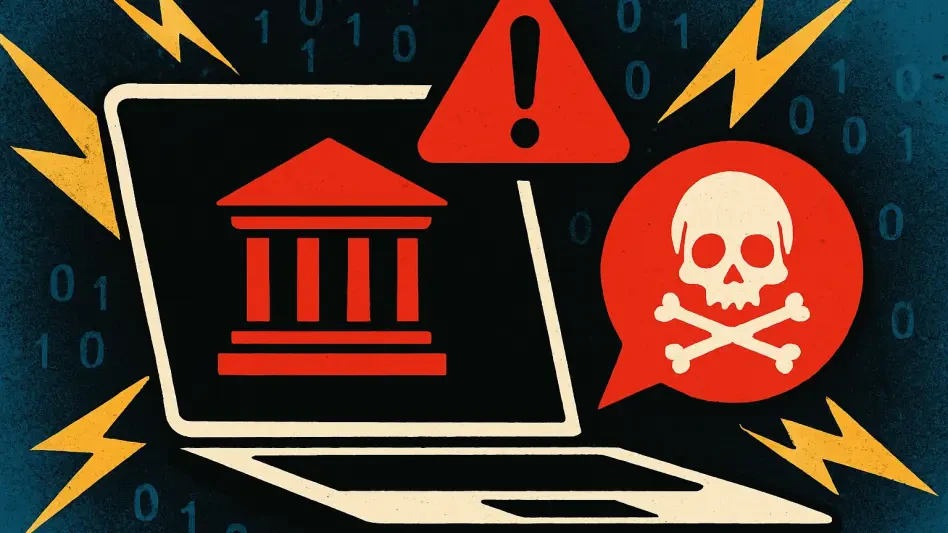In an era where digital threats evolve at an alarming pace, a new phishing campaign known as ClickFix has emerged as a significant danger to macOS users, employing cunning social engineering tactics to steal sensitive information. This sophisticated malware disguises itself as a routine CAPTCHA verification process, tricking unsuspecting individuals into executing harmful commands directly in their Terminal application. Unlike broader attacks that cast a wide net, this campaign hones in on macOS environments with tailored instructions designed to exploit user trust. By mimicking familiar verification prompts often seen on legitimate websites, the malware bypasses suspicion and leverages human error to initiate its malicious payload. What makes this threat particularly concerning is its ability to evade traditional antivirus solutions through innovative methods, setting a new standard for phishing sophistication. As cybercriminals refine their approaches, understanding the mechanics of such attacks becomes crucial for safeguarding personal and financial data against these deceptive strategies.
Unveiling the Mechanics of a Stealthy Threat
The inner workings of the ClickFix malware reveal a calculated approach to data theft that begins when users land on a compromised URL, often disguised as a legitimate trading platform. At this stage, a prompt mimicking a human verification step lures macOS users into copying and pasting a specific command into their Terminal. This command, unbeknownst to the victim, decodes a base64-encoded string that fetches an obfuscated AppleScript payload from a remote server. By avoiding traditional executable binaries, the malware sidesteps common detection mechanisms that rely on recognizable signatures. Instead, it operates through scripts that blend into normal system activities, making it a stealthy adversary. This method not only highlights the creativity of attackers in bypassing security barriers but also underscores the vulnerability of systems when users are misled into performing actions that seem benign at first glance. The reliance on user interaction as a gateway for infection marks a troubling trend in modern cyber threats targeting specific platforms.
Once activated, the ClickFix malware sets up a temporary directory within the /tmp folder of the macOS system to orchestrate its data harvesting operations. From there, it methodically scans critical user directories such as Desktop, Documents, and Library, searching for files with extensions like .pdf, .docx, and .key that might contain valuable information. Beyond personal documents, the malware targets browser data, including Keychain databases, Safari cookies, and credentials stored in Firefox or Chromium-based browsers. It also seeks out cryptocurrency wallet files linked to popular extensions like MetaMask and Exodus, aiming to capture financial assets. After collecting this sensitive data, the malware compresses it into a zip file and transmits it to a command-and-control server operated by the attackers. A subsequent cleanup routine erases traces of the temporary directory, complicating efforts to trace the infection or recover stolen information. This systematic approach to data theft and evasion poses a formidable challenge to cybersecurity defenses.
Social Engineering as the Core of Deception
At the heart of the ClickFix campaign lies a heavy dependence on social engineering, exploiting user trust through carefully crafted prompts that resemble Cloudflare-style verification screens. These deceptive interfaces convince macOS users to manually execute commands that they believe are part of a legitimate process, thereby granting the malware access to their systems. The tailored instructions provided to macOS users differ significantly from those shown to Windows users, demonstrating the attackers’ deep understanding of platform-specific behaviors. By capitalizing on a lack of technical scrutiny, the campaign effectively turns user compliance into a weapon. This tactic reveals a critical gap in security awareness, as even tech-savvy individuals can fall prey to well-designed phishing attempts that mimic trusted protocols. The success of such attacks emphasizes the need for education on recognizing suspicious prompts and understanding the risks of executing unfamiliar commands in system applications.
Further compounding the challenge is the malware’s use of obfuscation techniques to thwart analysis and detection by security tools. Random string generation and nested script invocations create layers of complexity that make static analysis difficult, allowing the ClickFix malware to remain under the radar of conventional antivirus programs. Known also as Odyssey Stealer, this threat showcases an alarming level of sophistication by dynamically fetching payloads from remote servers, ensuring that each infection can be unique and harder to predict. Such evasive maneuvers highlight the limitations of traditional security solutions that depend on known patterns or signatures for threat identification. As attackers continue to innovate, the cybersecurity community faces increasing pressure to develop adaptive tools and strategies that can keep pace with these elusive threats. The growing prevalence of terminal-based attacks like this one signals a shift toward exploiting user behavior over automated infection vectors.
Adapting to an Evolving Threat Landscape
Reflecting on the impact of the ClickFix malware, it’s evident that past encounters with this threat exposed significant vulnerabilities in macOS environments, driven by user interaction and deceptive verification prompts. The campaign’s ability to harvest a wide range of sensitive data, from personal documents to cryptocurrency credentials, while employing cleanup mechanisms to cover its tracks, left a lasting impression on the importance of proactive defense measures. Security operations centers had to pivot quickly, integrating updated threat intelligence to counter the malware’s stealthy tactics. Those efforts underscored the necessity of staying ahead of cybercriminals who continuously refine their methods to exploit human error and system weaknesses. The lessons learned from confronting this malware became a catalyst for rethinking how endpoint protection and incident response are approached in the face of evolving digital dangers.
Looking forward, combating threats like ClickFix demands a multi-layered strategy that prioritizes user education alongside advanced technological safeguards. Raising awareness about the dangers of phishing attempts and the importance of scrutinizing unexpected prompts can empower individuals to act as the first line of defense. Simultaneously, implementing robust security controls, such as real-time monitoring and behavior-based detection tools, can help identify and mitigate terminal-based attacks before they cause significant harm. Collaboration between cybersecurity experts and software developers is also essential to close gaps that attackers exploit through platform-specific tactics. By fostering a culture of vigilance and investing in cutting-edge solutions, the digital community can better prepare for the next wave of sophisticated malware campaigns. These actionable steps offer a path toward reducing the risks posed by deceptive threats and ensuring a safer online experience for all users.








